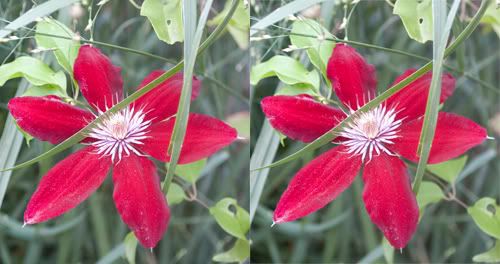You can find this post here on my new site for the full post and to leave comments.
Just a quick post today. I first saw this technique used at Plants are the Strangest People and have wanted to try it out since.
To see the picture in 3D you'll have to cross your eyes so the pictures overlap.

I'm happy with how it turned out and I'll definitely be playing around with it again.


I don't think I'm capable of such things. I'm ashamed and confused...
ReplyDeleteAaerelon: you sort of have to get your eyes to focus on a point behind your computer monitor. Being really tired helps too, sometimes.
ReplyDeleteAndrew: Huh. That did turn out well. Apparently it helps to have lots of things overlapping one another.
A lot of the time when I try doing this, I get a sort of 3-D-ish effect, but everything ends up looking more like cardboard cutouts of objects than actual objects. It's hard to describe. But your picture actually works well enough to show that the lower-left petal is closest to the viewer, and the upper-right one is furthest and curved away. Good deal.
You can also manage a semi-3D image of sorts by quickly alternating the two images (my pictures used as an example here). This allows larger images to be used but for practical purposes .gif files need to be used, which makes me sad. I don't think the effect is as nice but being able to show larger pictures is a big bonus.
ReplyDeleteI've found that cardboard look can often be seen with larger depths of field. The soft focus in the background of my pictures probably helped prevent this.
Can't seem to cross my eyes, but a cute idea.
ReplyDelete